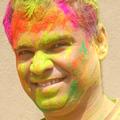Cited By
View all- Rao PJoshi AD’Souza N(2025)Investigating Contextual Factors in Technology-Based Solutions Designed to Support Health and Fitness Routines for Older Adults: A Systematic ReviewHuman-Computer Interaction. Design and Research10.1007/978-3-031-80829-6_8(161-192)Online publication date: 14-Feb-2025
- Dotch EMavrovounioti ADu WAnkrah EJohnson JMin AHayes G(2024)Accessibility through Awareness of Noise Sensitivity Management and Regulation PracticesProceedings of the 26th International ACM SIGACCESS Conference on Computers and Accessibility10.1145/3663548.3675630(1-12)Online publication date: 27-Oct-2024
- Rey BSakamoto YSin JIrani P(2024)Understanding User Preferences of Voice Assistant Answer Structures for Personal Health Data QueriesProceedings of the 6th ACM Conference on Conversational User Interfaces10.1145/3640794.3665552(1-15)Online publication date: 8-Jul-2024
- Show More Cited By


